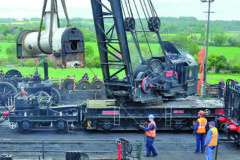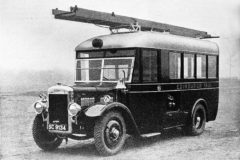River Medway shipping remembered
Posted by Chris Graham on 18th August 2021
Geoff Lunn, who has lived near the River Medway for most of his life, recalls times when the waterway was full of interesting shipping.
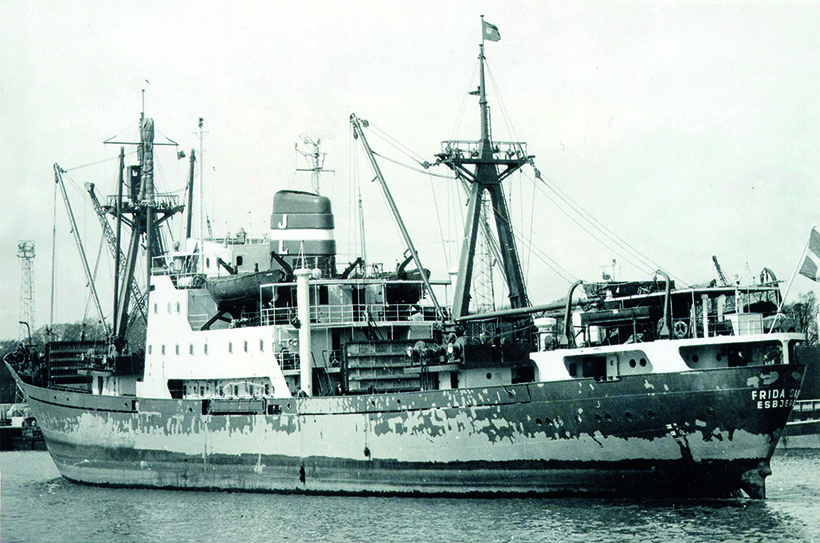
River Medway shipping remembered: Frida Dan (1957/2,676gt) was one of J Lauritzen’s Danish-flagged ships which brought wood pulp to Rochester buoys.
From its source in Sussex, the River Medway – Kent’s principal waterway – flows for 70 miles in a north-easterly direction, before entering the Thames estuary. For centuries, it’s been regarded as a safe and secure haven for shipping. In fact, in the 16th century King Henry VIII, by ordering the building of ships specifically for war, paved the way for the Medway’s long-standing connections with the Royal Navy, with its fighting ships sheltering in the Medway’s lower reaches during the winter.
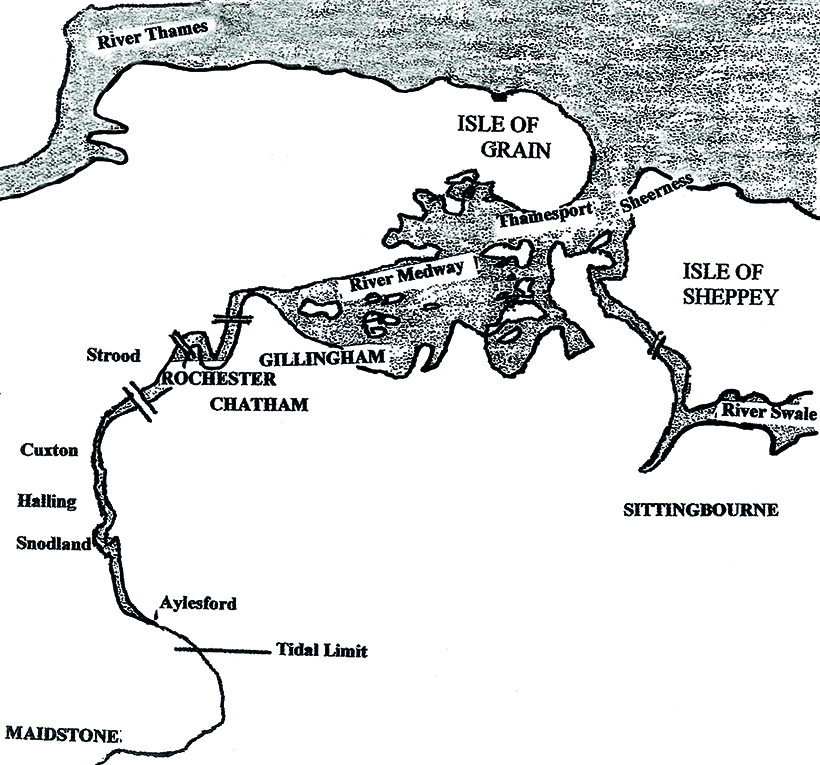
Around this time, the rental of a storehouse and the construction of further dock buildings announced the birth of Chatham Dockyard, which became an important naval base for the next four centuries. Of all the ships built at the dockyard, the most famous was Lord Nelson’s HMS Victory, launched in 1765. Shipbuilding and ship repair work, not only at Chatham but also at the smaller Sheerness Dockyard, led to the transportation of English oak from the Kentish Weald, downriver to the two yards.
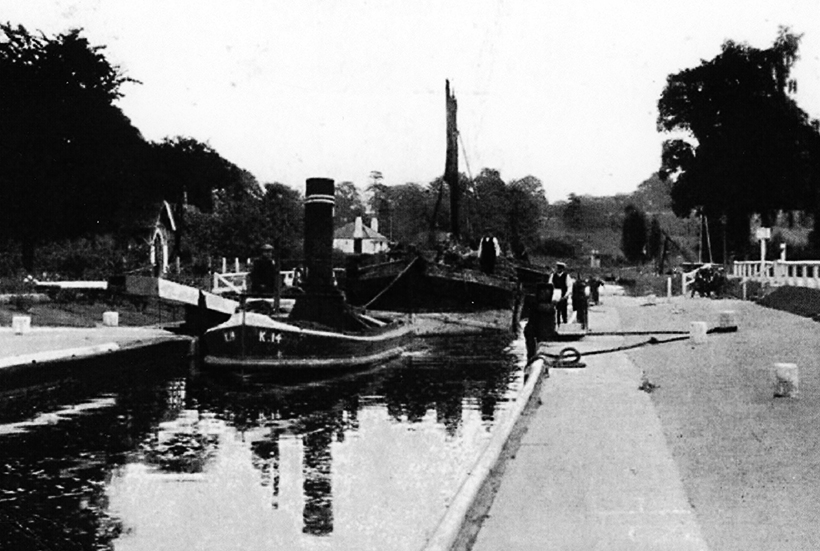
The 1914-built tug K-14, owned by JP Knight & Sons, pulls a sailing barge through Allington Lock, near Maidstone.
During the 19th century, as steam power took over, and many of the world’s largest iron warships were taking to its waters, there was also a notable increase in merchant shipping in the river as three local industries – the manufacturing of paper, cement and bricks – expanded. All used water transport for supplying raw materials and fuel, and for distributing the finished products. In 1854, a large paper mill was opened at Snodland, on the banks of the Medway between Rochester and Maidstone, and paper manufacturing became the leading, local industry.
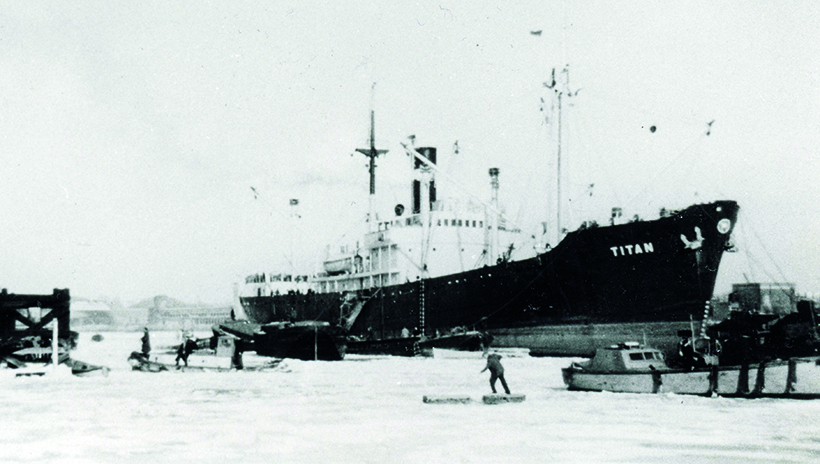
Frozen-in; the Swedish cargo ship Titan off Ship Pier, Rochester, during the big freeze of 1963.
Paper money
English china clay, esparto grass from Spain and coal would be shipped into the Medway and upriver to the mill and, in 1921, a second, large mill – owned by Albert E Reed – was opened near Aylesford. Small coasters conveyed cargoes to and from the cement factories and brought china clay for paper-making. Scandinavian pulp, bound for Reed’s mill, however, was shipped to Rochester by larger cargo vessels.
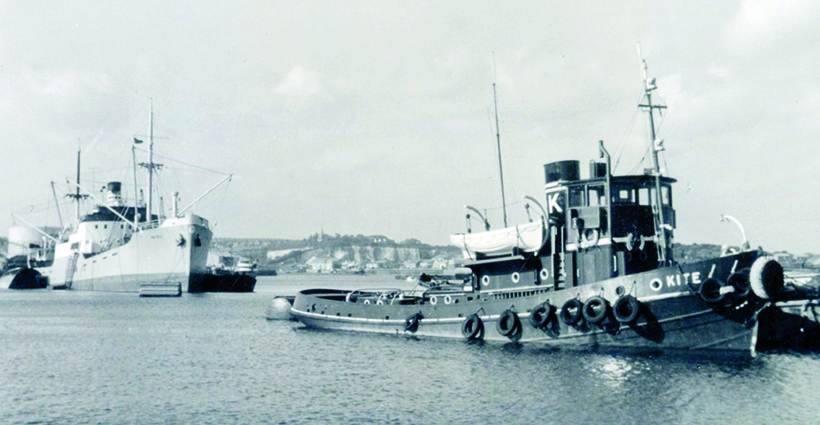
This typical Medway scene from the mid-20th century shows the tug Kite (1952/118gt) moored ahead of a pulp ship, in Limehouse Reach.
Immediately downstream from Rochester Bridge, the Medway sweeps into a large reverse ‘S’ bend, which used to encompass working wharves, ship repair slipways and piers at Strood, Rochester and Chatham. The stretch, known as Limehouse Reach had, on either side, the working wharves of Rochester, where pulp-carrying vessels would moor mid-stream at Rochester buoys, to discharge cargoes into lighters for towing upriver to Reed’s mill.
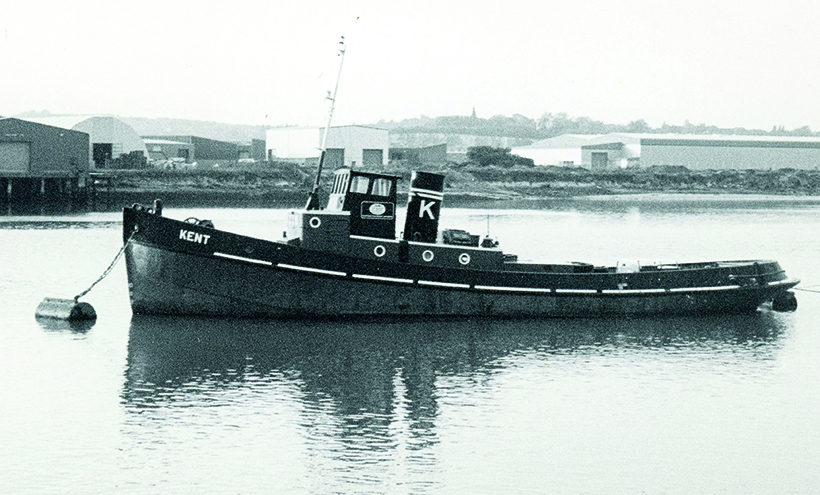
The tug Kent, owned by Knights, led in the first tanker to berth at the BP refinery, and is now preserved and based at Chatham Maritime.
In the late 1950s and 1960s I recall, as a young lad, diverting from my daily journey to school to catch sight of these vessels moored off Rochester. Frequent visitors were freighters owned by the Swedish company Iris Reederei, such as Atair (1947/1,586gt), Indus (1945/2,806gt) and Titan (1947/1,586gt), which found herself iced-up when the Medway froze during the harsh winter of 1963.
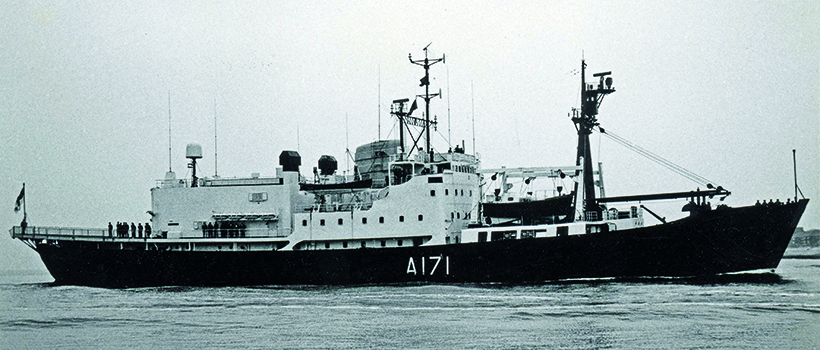
The ice patrol vessel HMS Endurance on the Medway; earlier in her career, she sailed as the Danish cargo ship Anita Dan.
Other regular callers were cargo ships operated by Finnlines, and vessels owned by the Danish company J Lauritzen, whose red hulls would brighten up many a dull winter day. An interesting visitor was Anita Dan (1956/2,642gt) which, in 1967-68, was converted into the Antarctic ice patrol ship HMS Endurance, under which guise she would subsequently call at Chatham Dockyard. In contrast with the red Dan ships, were the yellow-hulled, larger fleet members of FT Everard & Sons, which would join their Scandinavian counterparts mid-stream.
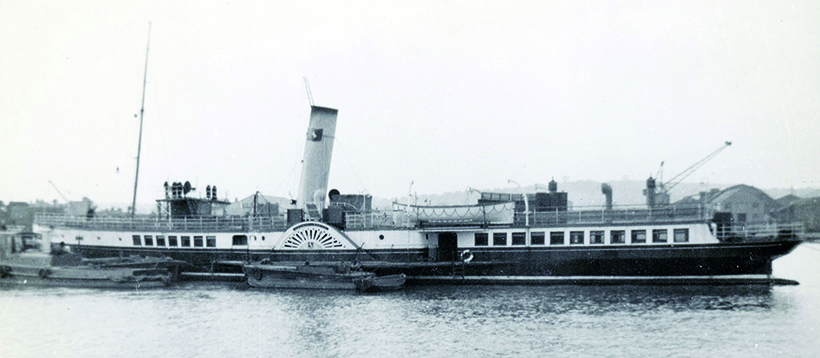
Taking a well-earned winter break in a Rochester creek, the paddle steamer Medway Queen was one of the most popular vessels to have sailed on the River Medway.
Changing times
At the top end of Limehouse Reach was Cory’s Wharf, which dated back to pre-1914, and was used by Wm Cory’s colliers, serving the many gasworks that lined the Medway. But, as the gasworks gradually disappeared so did the coal carriers, and the wharf moved on to receiving cargoes of aggregates delivered by sand-suction dredgers.
The Medway’s port services for handling merchant ships and their cargoes were provided by the local businesses London & Rochester Trading Company, which carried out the lighterage work with the help of its imaginatively-named small tugs Coaxette, Luggette, Pullette and Snatchette, and Thomas Watson (Shipping) Ltd, nominated agents and stevedores.
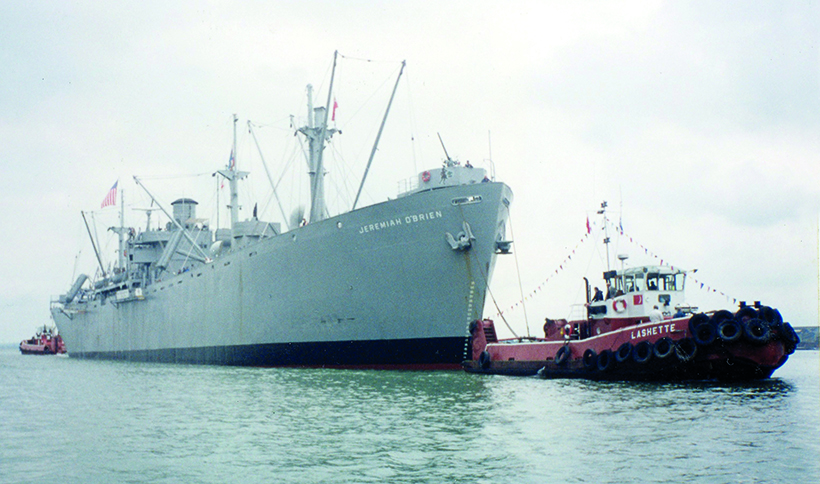
Aided by the tug Lashette, Jeremiah O’Brien, the world’s last operational Liberty ship, arrives at Chatham.
Both companies were shipowners in their own rights, operating dry-cargo, short-sea vessels and barges. Watsons was based in Rochester for 120 years before closing in 2000, while London & Rochester (later Crescent Shipping, part of the Hayes Group), owned two, larger tugs, Enticette (1953/108gt) and Dragette (1947/50gt), as well as a fleet of coasters, whose names contained the suffix ‘ence’.
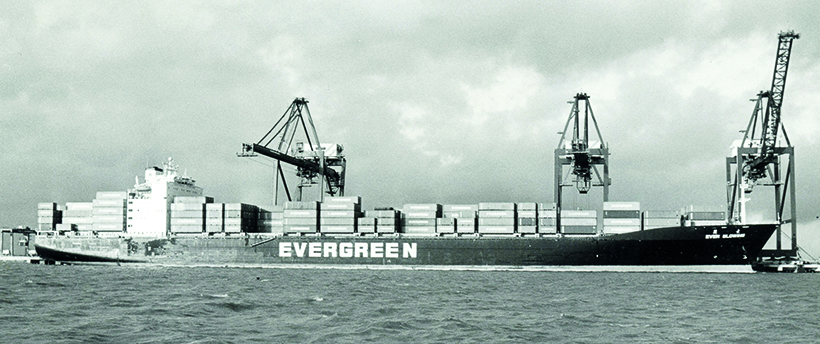
Ever Glowing was the first Evergreen Line container ship to berth at the newly-completed Thamesport, in January, 1991. (Pic: Kent Messenger Group)
The major part of the Medway’s towage business, however, was undertaken by the local tug company JP Knight Ltd. Founded in 1892, it still has offices in Chatham. In 1950, the company secured a 30-year towage contact with a new oil refinery that was under construction on the Isle of Grain. A much smaller refinery opened on the site in 1923, while the newer, £26 million complex was the largest in Europe. Commissioned by the Anglo-Iranian Oil Company (later the British Petroleum Company), it was completed in March 1953, and Knight’s tug Kent (1948/121gt) had the honour of leading in the first tanker to berth there, the 18,291gt British Skill. As tankers grew in size, so did the tugs, and Knight took delivery of the 206gt Kestrel in 1955 then Kenley, 245gt, in 1958.

The bulk carrier Sommen discharging a cargo of forest products at the Transit Terminal, Crown Wharf.
Royal Navy cuts
In 1960, Sheerness Dockyard was affected by cuts to the Royal Navy, but soon reopened as a commercial port, increasing the amount of merchant shipping using the Medway. However, a decade later, the wood pulp trade was undergoing major changes, with an increase in imported, manufactured newsprint and the implementation of new safety measures for the carriage of pulp by sea. By 1980, the pulp trade into Rochester had virtually ceased.
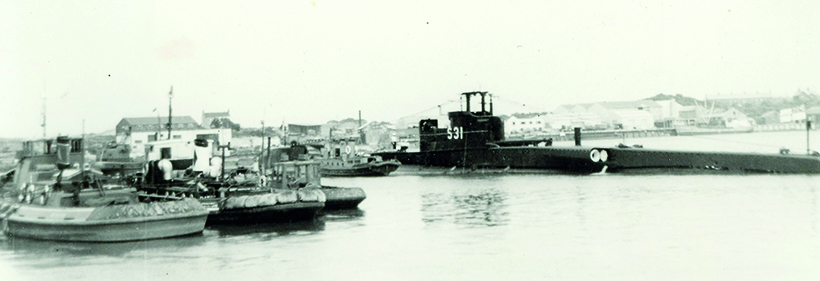
The T class submarine HMS Trenchant, pictured off Strood Pier, was one of 57 submarines built at Chatham Dockyard. Launched in March 1943, she had a displacement of 1,290 tons, and was broken up in 1963.
The early 1980s was a difficult time for the Medway area, as BP closed its Isle of Grain refinery on August 27th, 1982, after almost 30 years of operation, while the British Government announced the closure of Chatham Dockyard. The dockyard gates were closed for the final time on March 31st, 1984, bringing to an end centuries of Royal Naval connections, during which more than 500 ships, including 57 submarines, had been built there. Fortunately, the dark cloud over the Medway during that time proved to have a silver lining, as both sites were redeveloped with, on the Isle of Grain, the third largest container port in Britain being built.

Awaiting her fate, the Anchusa class sloop HMS Chrysanthemum, launched on November 10th, 1917, moored off Rochester
The first phase of the work began in December 1988 and, on September 14th, 1990, Thamesport – as the new terminal was somewhat surprisingly named – was officially opened. Over the course of the following years, several lucrative links were made between the port and some of the world’s largest container ship operators, including the giant Taiwan-based Evergreen, whose 46,551gt Ever Glowing made the Corporation’s first scheduled arrival in January 1991. Meanwhile, across the Medway estuary, Sheerness was growing as a premier port for handling vehicles, fresh produce and forest products.
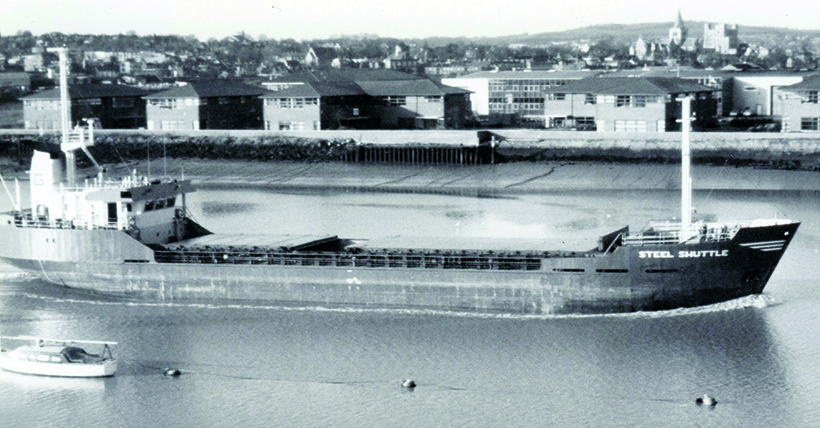
The Dutch-flagged coaster Steel Shuttle passes Chatham on her way from Stanley’s Wharf to IJmuiden.
Dockyard renaissance
Back upriver, Chatham Dockyard was divided into three projects: a working museum telling the story of the dockyard, shipbuilding methods and naval life at sea; a retail and entertainment complex that, with the former No.1 Basin, is known as Chatham Maritime; and a commercial port, called Chatham Docks, which handles various cargoes, including forest products and scrap metal. The working museum, Chatham Historic Dockyard, gained its own passenger pier as paddle steamer excursions returned to the Medway after a break of more than 30 years.

The coastal cargo vessel Buxtehude (1985/2,565gt) unloads at Chatham Docks, which were originally part of the Chatham naval base.
The little 94gt steamer Kingswear Castle had been built in 1924 for service on the River Dart, where she operated until 1965. After retirement she was neglected but, unlike Medway Queen, she was fully restored to working order by the Paddle Steamer Preservation Society, and moved to her new base at Chatham in 1985, running trips up and down the Medway, with the occasional sojourn into the Thames.

The 1973-built cruise ship Vistafjord, which was built by Swan Hunter, being manoeuvred towards her berth at Sheerness Docks in the early 1990s. She later became Caronia and, from 2004, Saga Ruby for Saga Cruises.
During the 1990s, commercial shipping at Rochester was restricted to a few wharves. The shortsea sister vessels Steel Shuttle and Steel Sprinter ran a regular service between Stanley’s Wharf and the Dutch port of IJmuiden carrying steel while, almost opposite, the Transit Terminal at Crown Wharf handled forest products brought in by Swedish ships of Ahlmark Lines AB, the largest of which was Sommen (1983/4,436gt). Immediately upriver from Crown Wharf, Scotline opened a dedicated terminal in 1994 for imported timber and wood pulp, shipped in by its own fleet of vessels.
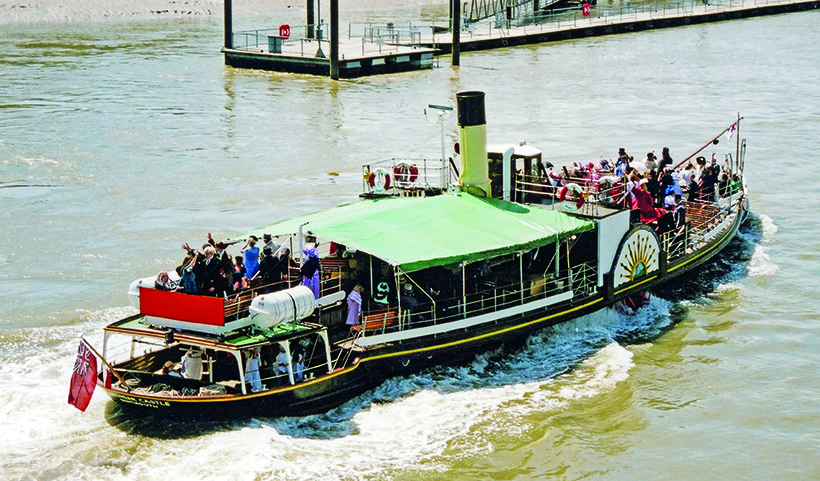
Kingswear Castle resurrected paddle steamer trips on the River Medway from 1985. However, she returned to her original home on the River Dart in 2013.
Unusual visitors
Although the River Medway has seen many changes over recent decades, with fewer working wharves, a number of interesting, if not unusual, ships have entered its waters. In the early 1990s the Cunard cruise ship Vistafjord (1973/24,492gt) undertook a short programme of cruises out of Sheerness but, as there was no cruise terminal at the port, the liner moved her UK base to Southampton.
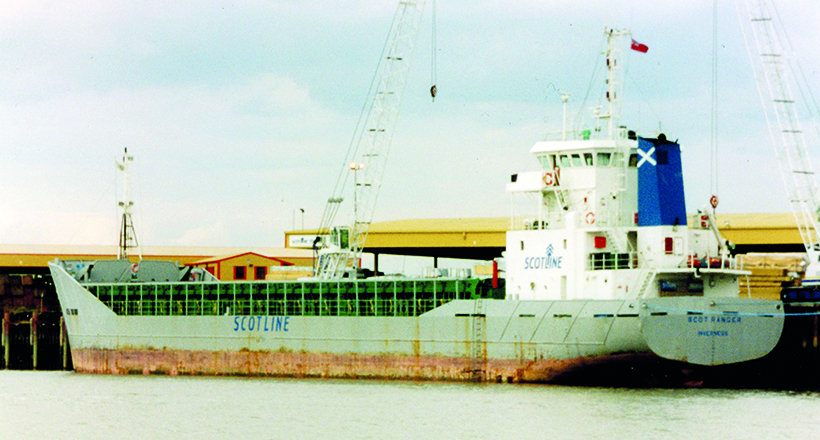
Scotline has expanded its Medway operations in recent years. One of the company’s ships, Scot Ranger (2,260gt), is berthed at Rochester. The vessel was sold in 2019.
In June 1994, the world’s last operational Liberty ship, Jeremiah O’Brien, called at Chatham, having steamed from San Francisco to participate in the 50th Anniversary D-Day celebrations. Meanwhile, a veteran ship, HMS Chrysanthemum, was lying off Rochester awaiting sale. Built in 1918 as an Anchusa-type ‘Q’ sloop, the 1,290-ton vessel had become a familiar sight berthed alongside London’s Embankment for many years, before moving to the Medway. Sadly, she caught fire in June 1995, and was subsequently dismantled at Strood.
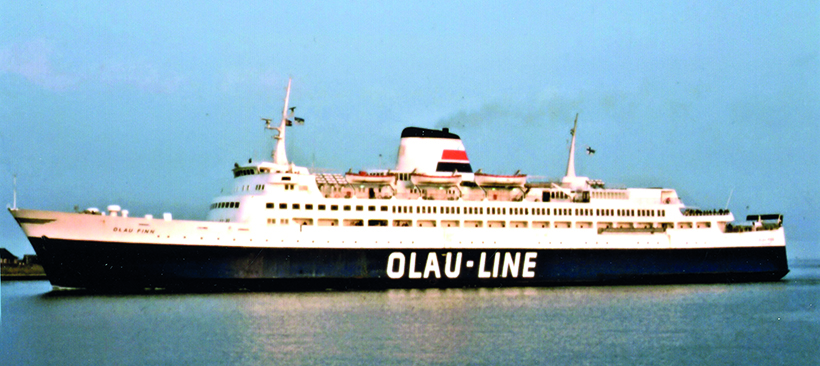
Olau Finn, under charter to Olau Line from Finnlines, was deployed on the Sheerness-Vlissingen route between 1976 and 1980.
The River Medway is now a far cry from the days when its tidal waters were bustling with pulp ships, barges, tugs and lighters. In 2013, the paddle steamer Kingswear Castle returned to the River Dart, leaving a void in excursions on the river and, since the advent in 2013 of the huge London Gateway container port in the lower Thames, the Thamesport terminal has lost all of its ocean container services. and been redeveloped as a shortsea port.
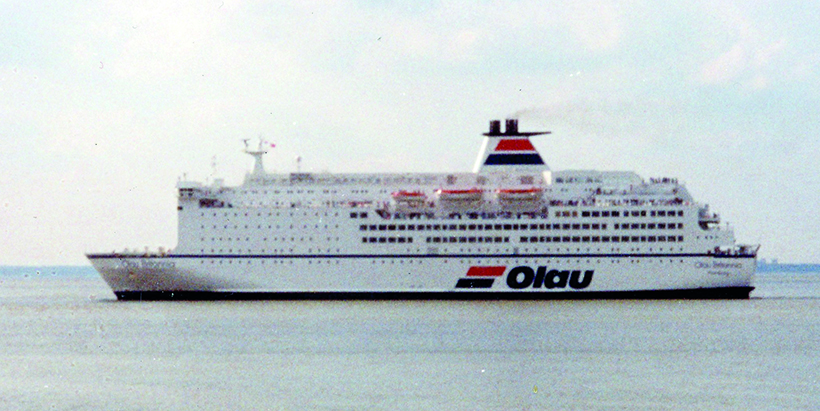
The 33,336gt Olau Britannia approaching Sheerness. She and her sister Olau Hollandia were by far the largest ferries on the Vlissingen service, which ended in 1994. Olau Britannia went on to serve as Pride of Portsmouth (1994–2005), becoming SNAV Lazio in 2005 after sale to Italy-based SNAV for service between from Civitavecchia, Palermo and Olbia. In 2017 she was renamed GNV Atlas.
Regeneration
Meanwhile, within the former Chatham Dockyard, part of Chatham Docks is being regenerated as a housing and business development scheme promoted by Peel Ports, and the docks are likely to cease working by 2025. On a more positive note, though, Chatham Historic Dockyard now features the historic destroyer HMS Cavalier, the submarine HMS Ocelot and the 19th century sloop HMS Gannet in a permanent ‘Battle Ships’ exhibition, which attracts 190,000 visitors a year.

A thriving commercial port has evolved at Sheerness, on the site of the former naval base. Pictured (from left to right) are a bulk carrier, a reefer and a ro-ro vessel, all representative of the types of shipping handled there.
Furthermore, Scotline added Crown Wharf to its Rochester operations in 2011. So, the River Medway is still very much alive, but those days when I would venture along the creaking piers of Chatham to view the Scandinavian pulp ships unloading their cargoes, have become a distant memory.
For a money-saving subscription to Ships Monthly magazine, simply click here



